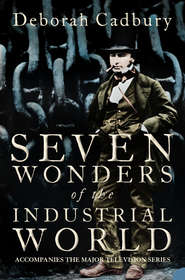По всем вопросам обращайтесь на: info@litportal.ru
(©) 2003-2024.
✖
The Lost King of France: The Tragic Story of Marie-Antoinette's Favourite Son
Настройки чтения
Размер шрифта
Высота строк
Поля
For the king it was a terrible defeat. Yet again, he had failed. He had failed as a king, and brought his country to revolution. He had failed as a husband to protect his wife: she was now subject to even worse unknown terrors. He had failed as a father to bring his precious children to safety. Travelling with his loyal wife, his devoted sister and his young children, he knew that any words of assurance to them were empty promises; events had moved beyond his control. And somehow the failures had piled up despite his best efforts. He had always tried to avoid bloodshed; he couldn’t bear anyone to be hurt on his behalf. Yet his very gentleness and compassion had led inexorably to this utterly terrifying point in their lives. ‘I am aware that to succeed was in my hands,’ he wrote later to General de Bouillé. ‘But it is needful to have a ruthless spirit if one is to shed the blood of subjects … the very thought of such contingencies tore my heart and robbed me of all determination.’
During the mid-afternoon, a local nobleman, the loyal Comte de Dampierre, rode up to salute the king, ‘in despair at the king’s being stopped’. The crowd were enraged at Dampierre’s royalist gesture and tried to pull him off his horse. According to Marie-Thérèse, ‘hardly had he spurred his horse, before the people who surrounded the carriage fired at him. He was flung to the ground … a man on horseback rode over him and struck him several blows with his sabre; others did the same and soon killed him.’ The scene was horrible, wrote Marie-Thérèse, ‘but more dreadful still was the fury of these wretches, who not content with having killed him, wanted to drag his body to our carriage and show it to my father’. Despite his entreaties, ‘these cannibals came on triumphantly round the carriage holding up the hat, coat and clothing of the unfortunate Dampierre … and they carried these horrible trophies beside us along the road’.
Worse was to come at Épernay, the following day. At one point the royal family were obliged to abandon their carriage to enter a hotel, struggling through a crowd of angry people armed with pikes ‘who said openly that they wished to kill us’, wrote Marie-Thérèse, shocked by their bloodcurdling threats. ‘Of all the awful moments I have known, this was one of those that struck me most and the horrible impression of it will never leave me … My brother was ill all night and almost had delirium so shocked was he by the dreadful things he had seen.’
Ahead, a hostile reception was waiting for them in Paris. Following orders from Lafayette, the people lining the streets kept their heads covered and remained absolutely silent, to show their contempt for this monarch who had tried to flee. Lafayette’s orders were so strictly observed that ‘several scullery boys without hats, covered their heads with their dirty, filthy handkerchiefs’, recorded Madame de Tourzel. As they made their way down the Champs-Elysées and across the Place Louis XV, it was like an unspoken, public decoronation, as the citizens of Paris refused to acknowledge the royal status of their king and queen.
The crowds were so great it was evening before they finally reached the Tuileries. As they stepped down from the carriage someone tried to attack the queen. The Dauphin was snatched from her and whisked to safety by officials as others helped the queen into the palace. Louis-Charles was becoming increasingly terrified at the violence targeted directly at the royal family. ‘As soon as we arrived in Varennes we were sent back. Do you know why?’ he asked his valet, François Huë, as he struggled to make sense of it all. He was not easily comforted and that night, once again, he was woken with violent nightmares of being eaten alive by wolves.
As the Dauphin fell into a fitful sleep, ‘guards were placed over the whole family, with orders not to let them out of sight and to stay night and day in their chambers’. The next day the Assembly provisionally suspended Louis from his royal functions. The once untouchable king and queen were now finally reduced to the powerless symbols of a vanishing world.
The king’s support collapsed after his abortive flight to Varennes. Those who had remained loyal to the monarchy now questioned the motives of a king who had tried to flee, exposing his people to the risk of civil war. Those who had opposed the monarchy had a concrete weapon: here was evidence that the king would betray his people. Imprisoned in the Tuileries, with little support in the Assembly or outside it, in September 1791 the king reluctantly signed the new constitution. The once supreme Bourbon ruler was now, by law, no more than a figurehead, stripped of his powers.
Louis still clung to the hope that this would mark an end to the revolution and that France would settle down as a constitutional monarchy. Yet when he inaugurated the new ‘Legislative Assembly’ in October, demands for still further change gathered momentum. Conflicts grew between the moderates and the extremists in the Assembly. The key battlegrounds were over the growing number of émigrés and the clergy. What measures should be taken to protect France from the émigrés who might be plotting counter-revolution? How could the clergy who had refused to swear the oath of allegiance to the constitution be brought into line?
The king found himself facing a crisis in November, when the Assembly introduced a punitive decree: any priest who had not signed the oath would lose his pension and could be driven from his parish. This was presented to the king for his approval under the new constitution. As crowds gathered menacingly outside the Tuileries demanding that he sign, Louis wrestled with his conscience. His only remaining power was a delaying veto. If he used this he would infuriate the Assembly and the Parisian people, but how could he approve such a measure when the constitution promised ‘freedom to every man … to practise the religion of his choice’? The king vetoed the decree.
The news outraged deputies at the Assembly. The extremists, largely drawn from a political club known as the Jacobins, sought to limit the king’s power still further. Maximilien Robespierre was not a member of the Legislative Assembly, but was highly influential in the Jacobin Club and could exploit its powerful network throughout the country to influence opinion. Although he was not a good speaker, his supporters considered him eloquent and he was a skilled strategist, whose passionate appeals for patrie and virtu stirred political activists. ‘I will defend first and foremost the poor,’ he declared, as he campaigned against the privileges of the nobility and the monarchy. He found support in other prominent republicans such as the barrister Georges Danton, leader of the extremist Cordeliers Club.
Those opposed to the monarchy could turn to militant journalists such as Camille Desmoulins and Jacques-René Hébert to whip up public opinion in their favour. Hébert was a zealot for the cause, and with killing cruelty, week after week in his journal, Le Père Duchesne, he stirred up loathing of the royal tyrants. They were dehumanised and turned into hate objects. The king, for so long the ‘royal cuckold’ or ‘fat pig’, was now ‘the Royal Veto’: an animal ‘about five feet, five inches long … as timid as a mouse and as stupid as an ostrich … who eats, or rather, sloppily devours, anything one throws at him’. Whereas the ‘Female Royal Veto’ was ‘a monster found in Vienna … lanky, hideous, frightful … who eats France’s money in the hope of one day devouring the French, one by one’. Marie-Thérèse was ‘designed like the spiders of the French Cape, to suck the blood of slaves’. As for ‘the Delphinus … whose son is he?’ The endless stream of vituperation soaked into the consciousness of Parisians. It became easy to see the royal family as the terrible Machiavellian enemy gorged from preying on innocent French people.
The queen, drawing on all the strength of her character, was indeed now playing a formidable, duplicitous role. Determined to save the throne, that autumn she charmed the moderates in the Assembly with her apparent support for the constitution, while she was in fact in secret correspondence with foreign courts and her devoted Fersen. Count Fersen had escaped to Brussels where he joined the king’s brother, Provence, and was devastated to hear of the royal family’s recapture at Varennes. ‘Put your mind at rest; we are alive … I exist,’ the queen reassured him as she adapted to life closely surrounded by spies and enemies; even when she went to see her own son, an army of guards would follow her. Her only hope, she said, ‘is that my son at least can be happy … When I am very sad, I take my little boy in my arms, I kiss him with all my heart and this consoles me for a time’.
While Marie-Antoinette was writing in code to her brother, the Emperor Leopold, asking him to support the French monarchy, Fersen went on a desperate diplomatic tour of European capitals. In February 1792 he risked his life in a daring mission to return to France in disguise to see the queen in the Tuileries. Despite their efforts, in March the Austrian Emperor Leopold II died suddenly, to be replaced by Marie-Antoinette’s nephew, Francis II. Marie-Antoinette could not be sure that the Emperor Francis would intervene on her behalf and feared betrayal.
By spring 1792 the new powers in France were growing increasingly militaristic, convinced that neighbouring countries would be forced to act against their own populations’ possible political awakening. Rumours were rife of an immediate attack against France by an alliance of Austrians and Prussians, supported by émigré forces. Soon there were calls upon all patriots to defend their country as the warmongering verged on hysteria. In April, France declared war on Austria. Marie-Antoinette’s position became intolerable. Many people were convinced that l’Autrichienne who wished to ‘bathe in the blood of French people’ was an enemy agent, betraying the nation. When the French offensive in the Netherlands went badly, fears mounted that the Austrians and Prussians would march on Paris and restore the ‘royal tyrants’.
Despite the pressures of war the Assembly continued to persecute the clergy. Any priest still loyal to Rome denounced by more than twenty citizens was to be deported to the French colony of Guiana, a fate which was certain death, since leprosy and malaria were endemic in the colony. This decree was sent to the king for his approval. After much heart searching and anguish, he again used his veto and refused to sign this decree.
The very next day, 20 June 1792, thousands of citizens, angered by the king’s use of his veto, gathered around the palace. ‘This armed procession began to file before our windows, and no idea can be formed of the insults they said to us,’ wrote Marie-Thérèse. ‘On their banners was written “Tremble Tyrant; the people have risen”, and we could also hear cries of “Down with the Veto!” And other horrors!’ Thirteen-year-old Marie-Thérèse witnessed what happened next. ‘Suddenly we saw the populace forcing the gates of the courtyard and rushing to the staircase of the château. It was a horrible sight to see and impossible to describe – that of these people with fury in their faces, armed with pikes and sabres, and pell-mell with them women half unclothed, resembling Furies.’ In all the turmoil, Marie-Antoinette tried to follow the king but was prevented. ‘Save my son!’ she cried out. Immediately someone carried Louis-Charles away and she was unable to follow. ‘Her courage almost deserted her, when at last, entering my brother’s room she could not find him,’ wrote Marie-Thérèse.
Meanwhile, the crowd surged upstairs armed with muskets, sabres and pikes. Madame de Tourzel describes the ordeal. ‘The king, seeing that the doors were going to be forced open, wanted to go out to meet the factionists and try to control them with his presence.’ There was no time. The doors to the king’s rooms were axed down in seconds and the crowd burst in, shouting ‘The Austrian, where is she? Her head! Her head!’ Elisabeth stood valiantly by her brother, and Madame de Tourzel describes her great bravery as she was mistaken for the queen. ‘She said to those around her, these sublime words: “Don’t disillusion them. If they take me for the queen, there may be time to save her.”’
The revolutionaries turned on the king and demanded that he sign the decrees of the Assembly. For over two hours, Louis tried to reason with them. He pointed out that he had acted in accordance with the constitution and that in all conscience he believed his actions were right. At the insistence of the crowd, to prove his loyalty to the revolution, he wore a bonnet rouge, the symbol of liberty, and toasted the health of the nation. After some hours, it became clear that the king would not yield.
Meanwhile, Marie-Antoinette, finally reunited with both her son and daughter, was forced to flee from the Dauphin’s rooms as they could hear doors to the antechambers being hacked down. Accompanied by a few loyal allies, Princesse de Lamballe and Madame de Tourzel, they tried to escape to the king’s bedroom, without success. Clinging to her children, she took refuge in the Council Chamber. Trapped behind a table before the hostile crowds, they were protected by just a few guards. For two hours they endured taunts and jeers as the angry hordes paraded past, some bearing ‘symbols of the most unspeakable barbarity’, wrote Madame Campan. There was a model gallows, ‘to which a dirty doll was suspended bearing the words “Marie-Antoinette à la lanterne”’, to represent her hanging. There were model guillotines and a ‘board to which a bullock’s heart was fastened’, labelled ‘Heart of Louis XVI’. The seven-year-old Dauphin, who was ‘shrouded in an enormous red cap’, was crying.
After several hours, the mayor of Paris, Jérôme Pétion, arrived and dispersed the mob, pretending ‘to be much astonished at the danger the king had faced’, observed Marie-Thérèse. Traumatised, the royal family were finally reunited. Louis-Charles was so shocked by the day’s events that his usual sunny personality was stunned into complete silence as he clung to his parents in great relief. As for Marie-Thérèse, the endless succession of traumatic ordeals was rapidly undermining her. Already by nature ‘Madame Sérieuse’, she was losing ‘all the joy of childhood’, observed Madame de Tourzel’s daughter, Pauline, and she would lapse into deep and gloomy silences like her father.
For the next few days, the king’s bravery caused a popular swing in his favour. Nevertheless, behind the scenes the political landscape was changing fast. Robespierre, voted vice-president of the Jacobin Club in July, with well-argued, cold cunning, dedicated himself to the idea that democracy could only be established with the overthrow of the monarchy – and also the constitution and Legislative Assembly that recognised the role of the king. Together with radicals drawn from the Cordeliers Club, such as Georges Danton, Camille Desmoulins, Jean-Paul Marat and Jacques-René Hébert, they played on people’s terror of a foreign invasion. The king and queen in the Tuileries were portrayed as being at the scheming centre of interests that wanted to destroy France. When the Prussians entered the war, promising ‘vengeance’ if the king and queen were harmed, collusion seemed only too likely. While moderates like Lafayette left the capital, National Guards from the provinces poured into Paris. The highlight came on 30 July, when five hundred National Guards from Marseilles, recruited for their radicalism by their local Jacobin Club, arrived in Paris singing the rousing Marseillaise. The revolutionaries became known as sans culottes – meaning literally ‘without breeches’ – since they were dressed in working men’s clothes: baggy trousers, carmagnole jacket and hat. Whipped up into a frenzy of hatred by the militant journalism of Hébert, Desmoulins and others, these sans culottes were united in the desire to incite an insurrection against the ‘despicable tyrant’ and the ‘colossus of despotism’ in the Tuileries.
Inside the palace, clinging onto the last semblance of royalty, the queen was only too aware of the dangers. ‘On all sides’, wrote Madame Campan, ‘were heard the most jubilant outcries of people in a state of delirium almost as frightful as the explosion of their rage.’ The queen wrote to Fersen in early August: ‘our chief concern is to escape the assassins’ knives and to fight off the plotters who surround the throne on the verge of collapse. The factions no longer bother to hide their plans about murdering the royal family … they merely disagree about the method.’
Events came to a head during the night of 10 August, when an ‘Insurrectionary Commune’ was established at the Hôtel de Ville and began to give orders to the National Guard, in effect challenging the Legislative Assembly and creating a revolutionary government. Soon after midnight, bells rang out across Paris – the insistent sound a call to arms and a death knell for the French monarchy. The insurgents began to gather and soon the streets around the Tuileries palace were bristling with at least twenty thousand armed citizens.
Inside the palace, they could hear the tocsin ring out and the ominous sounds of the impending attack. The king had summoned 900 Swiss Guards in addition to the 900 Gendarmes and 2500 National Guards on duty at the palace, but only the Swiss Guards could be relied upon to remain loyal. No one slept, except the little Dauphin, whose ‘calm and peaceful slumber formed the most striking contrast with the agitation which reigned in every heart’, wrote the Marquise de Tourzel. The queen, true emperor’s daughter, wanted to stand her ground and fight to the last. The king, in helpless despair, could see no solution to the impasse. The attorney-general of the département of Paris, Pierre Roederer, arrived and informed them they had no choice but to flee before they were murdered. ‘Imagine the situation of my unhappy parents during that horrible night,’ wrote Marie-Thérèse, ‘expecting only carnage and death.’ Early in the morning the king tried to rally his troops. The queen heard in despair as the king, dishevelled and downtrodden, was greeted with hoots of derision and shouts of ‘Vive la nation!’ by some of the palace National Guards, many of whom were now fraternising with the protesters. ‘Some artillery men’, reported Marie-Thérèse, ‘dared turn their cannon against their king … a thing not believable if I did not declare that I saw it with my own eyes!’
At seven in the morning, Roederer insisted that they escape and take refuge in the Legislative Assembly, urging that ‘all of Paris was on the march’. The queen, bitterly frustrated at the prospect of fleeing to the lion’s den, held out against the idea. But the king would not risk bloodshed. ‘Marchons!’ he said, raising his hand. ‘There’s nothing to be done here.’
There was no time for preparations, no time to gather together treasured possessions or mementoes, even a change of clothes; the royal family fled with nothing from the palace. Marie-Antoinette followed Louis, holding her son and daughter by the hand, Louis-Charles disconsolately kicking out at leaves, which had fallen early. Princesse de Lamballe, Princess Elisabeth and the Marquise de Tourzel – in some agitation because she had been obliged to leave Pauline behind – followed, discreetly protected by a few Swiss Guards. ‘The terrace … was full of wretches who assailed us with insults. One of them cried out: “No women or we will kill them all!”’ recalled Marie-Thérèse.
‘At last we entered the passage to the Assembly. Before being admitted we had to wait more than half an hour, a number of deputies opposing our entrance. We were kept in a narrow corridor, so dark that we could see nothing and hear nothing, but the shouts of the furious mob … I was held by a man that I did not know. I have never thought myself so near death, not doubting that the decision was made to murder us all. In the darkness, I could not see my parents, and I feared everything for them. We were left to this mortal agony more than half an hour.’
Finally they were permitted to enter the hall of the Assembly. ‘I have come here,’ the king declared, ‘to prevent the French nation from committing a great crime.’ The royal family were hurriedly ushered into a journalist’s box, a small room, ten feet long, with a window with iron bars looking out onto the public gallery. Absolutely terrified, prisoners in this tiny hiding place, looking out through bars on their enemies debating their future, they lost all hope. There was no chance of preserving even a semblance of royal dignity. Through the tiny window they could only watch helplessly, hour after hour, impassive witnesses to the end of the monarchy. ‘We had hardly entered this species of cage,’ wrote Marie-Thérèse, ‘when we heard the cannon, musket-shots and the cries of those who were murdering in the Tuileries.’
Louis had assumed that by leaving the Tuileries he would stop an attack and help to prevent any bloodshed. However, the revolutionaries, armed with sabres and pikes, stormed the palace and attacked the red-uniformed Swiss Guards. The Swiss fired back and the sans culottes took casualties. Hearing of the slaughter, the king sent his last order, instructing his faithful Swiss Guards to lay down their arms. They obeyed, only to be massacred as the ‘populace rushed from all quarters into the interior of the palace’. The Tuileries became a bloodbath, with guards and nobles chased up onto the parapets fighting to the last as they were stabbed, shot or sabered. The dead or dying were flung from windows, some grossly mutilated, others impaled on pikes as trophies. Madame Campan, trapped inside the palace, ‘felt a horrid hand thrust down my back to seize me by the clothes’. She had sunk to her knees and was aware of ‘the steel suspended over my head’ by a ‘terrible Marseillais’, when she heard another voice yelling ‘We don’t kill women!’ She escaped.
As people fled from the palace, anyone who had defended the king – or was even dressed like a noble – was mercilessly hunted down. One woman reported glimpsing through the blinds of a house ‘three sans-culottes holding a tall handsome man by the collar’. When they had ‘finished him off with the butt of a rifle’, at least ‘fifteen women, one after the other, climbed up on this victim’s cadaver, whose entrails were emerging from all sides, saying they took pleasure in trampling the aristocracy under their feet’. During the day, over nine hundred guards and three hundred citizens became victims of the hysterical slaughter. Sixty Swiss Guards were taken prisoner, only to be led away to the Hôtel de Ville and brutally killed. A young Corsican by the name of Napoleon Bonaparte who witnessed the events of that day was filled with a sense of horror at the power of the mob. For Maximilien Robespierre, it was a ‘glorious event … the most beautiful revolution that has ever honoured humanity’. By nightfall the entire gruesome spectacle was illuminated by the orange glow of the Tuileries in flames.
Вы ознакомились с фрагментом книги.
Приобретайте полный текст книги у нашего партнера:
Приобретайте полный текст книги у нашего партнера:








